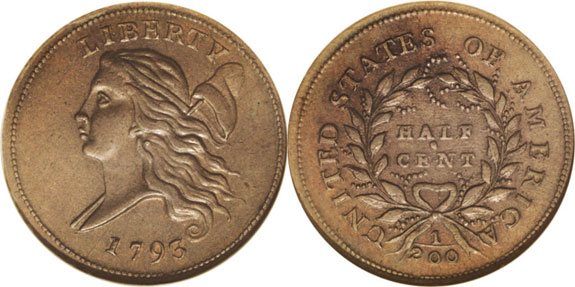The Coinage Act of April 2, 1792 authorized a full monetary system for the early United States of America. The act included authorization for the half cent, cent, half disme, disme, quarter dollar, half dollar, dollar, quarter eagle ($2.50), half eagle ($5.00), and eagle ($10).
The Act specified the weight of the half cent as 5.5 pennyweights or 132 grains (8.55 grams) of copper. This figure was exactly half the weight of the large cent. Before coinage of the Liberty Cap Half Cent commenced, the weight was lowered to 104 grains (6.74 grams). A second alteration to the official weight would occur in 1796 due to a shortage of copper, further reducing the weight to 84 grains (5.44 grams).
Throughout the changes to weight, the diameter of the coins remained constant at 23.5 mm. The composition of the coins was pure copper, although it is likely that some may have different alloys due to the various suppliers of planchets.
Different edges exist for the Liberty Cap Half Cents. The edges were lettered with “TWO HUNDRED FOR A DOLLAR” for the first two years of the series. For later years, a plain edge was used, although some coins from 1797 have a lettered edge or gripped edge.


